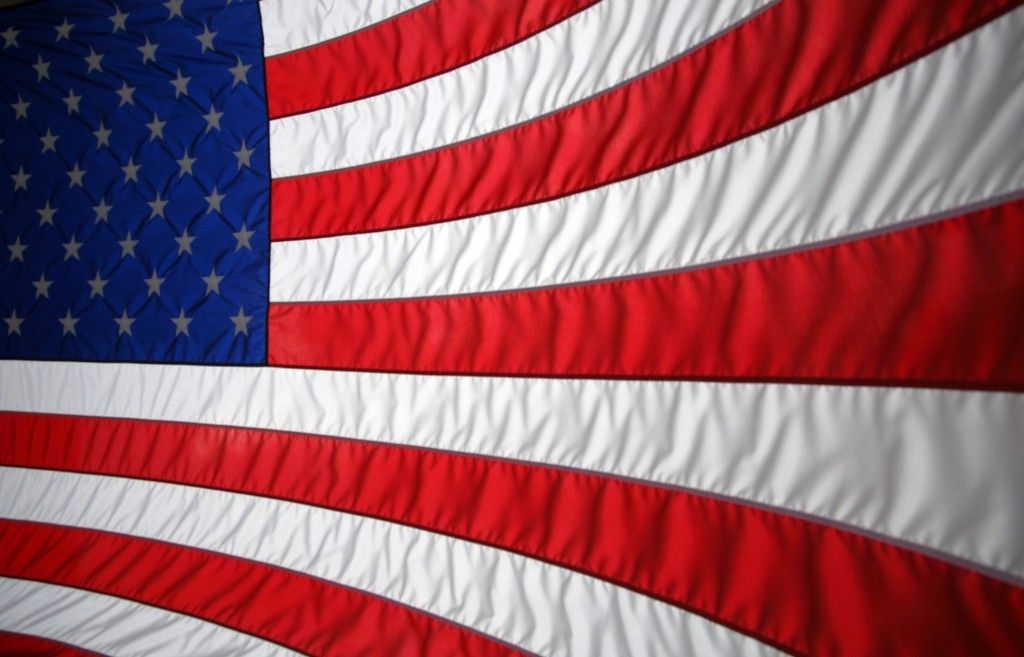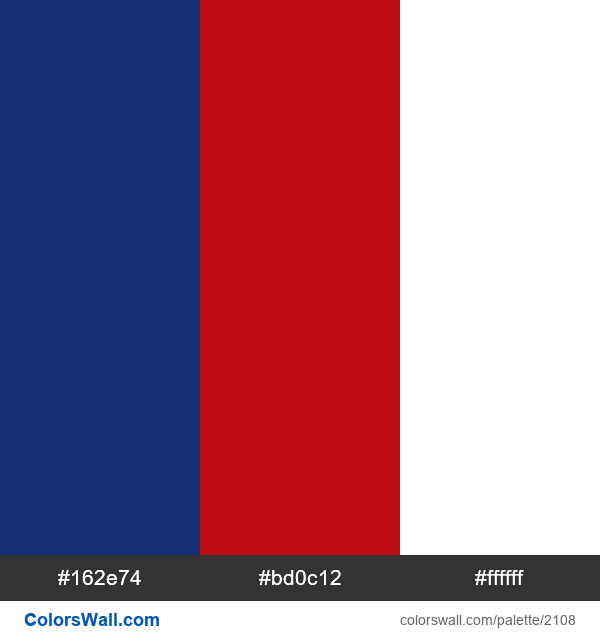Usa flag colors: The United States – US Flags [dot] Design
The United States – US Flags [dot] Design
Established July 4, 1776
With much of the evidence lost to history, historians disagree on which individuals designed and constructed early versions of the United States flag.
Notably, Francis Hopkinson claimed he designed the first flag and Betsy Ross, because of her grandson, has been credited with constructing it. Historians remain skeptical.
The flag has seen 27 different versions (and countless variations) since its official adoption June 14, 1777.
As new states joined, corresponding stars were added to the flag. With few specifications in place, a variety of creative star arrangements were produced. The orderly pattern of offset rows wasn’t standardized until 1959.
The current 50-star flag was adopted July 4, 1960.
Composition
The U.S. flag features thirteen horizontal stripes of alternating red and white, seven red and six white.
In the upper hoist canton is a union of blue with fifty white five-pointed stars arranged in nine horizontal offset rows.
Iconography
Colors
The official colors of the flag are white, “Old Glory Red” and “Old Glory Blue.”
There are a lot of varying color values in use due to the difficulty of interpreting Cable colors for digital screens.
The values here are provided by the U.S. State Department and the U.S. Embassy in the U.K.
Red represents valor and bravery, white symbolizes purity and innocence, and the blue stands for vigilance, perseverance, and justice.
Red
#bb133e
Cable No. 70180 Old Glory Red
PMS 193C
White
#ffffff
Cable No. 70001 White
Pantone White
Blue
#002147
Cable No. 70075 Old Glory Blue
PMS 282c
Construction
U.S. Executive Order 10834 specifies proportions for the flag, as recreated here.
The U.S. flag has a proportion of 1:1.9.
Each stripe is 1/13 the width of the hoist and each star is 4/5 the width of a stripe.
The union is the width of seven stripes and 2/5 the length of the fly.
Previous iterations
For years every flag was constructed by hand. Because there were no specifications for dimension, color, or star arrangement, the flag saw a plethora of one-off variations. Shown here is a timeline of each official iteration (including notable variations).
Pre–1777
Continential Colors
1777–1795
13 stars
The original 13 colonies: Delaware, Pennsylvania, New Jersey, Georgia, Connecticut, Massachusetts, Maryland, South Carolina, New Hampshire, Virginia, New York, North Carolina, Rhode Island
Francis Hopkinson flag
13-star variant
Betsy Ross flag
13-star variant
Cowpens flag
13-star variant
1795–1818
15 stars, 15 stripes
Vermont, Kentucky
Star-Spangled Banner
15-star variant that inspired Francis Scott Key’s “Defence of Fort M’Henry”
1818–1819
20 stars, 13 stripes
Tennessee, Ohio, Louisiana, Indiana, Mississippi
Great Star flag
20-star variant
1819–1820
21 stars
Illinois
1820–1822
23 stars
Alabama, Maine
1822–1836
24 stars
Missouri
1836–1837
25 stars
Arkansas
1837–1845
26 stars
Michigan
Great Star flag
26-star variant
1845–1846
27 stars
Florida
1846–1847
28 stars
Texas
1847–1848
29 stars
Iowa
Diamond flag
29-star variant
1848–1851
30 stars
Wisconsin
1851–1858
31 stars
California
1858–1859
32 stars
Minnesota
1859–1861
33 stars
Oregon
Fort Sumter flag
33-star variant
Great Star flag
33-star variant
Variation
33-star variant
1861–1863
34 stars
Kansas
Star flag
34-star variant
1863–1865
35 stars
West Virginia
Medallion flag
35-star variant
1865–1867
36 stars
Nevada
Wagon Wheel flag
36-star variant
1867–1877
37 stars
Nebraska
Variation
37-star variant
Medallion Centennial flag
37-star variant
1877–1890
38 stars
Colorado
Concentric circles
38-star variant
1890–1891
43 stars
North Dakota, South Dakota, Montana, Washington, Idaho
1891–1896
44 stars
Wyoming
1896–1908
45 stars
Utah
1908–1912
46 stars
Oklahoma
1912–1959
48 stars
New Mexico, Arizona
1959–1960
49 stars
Alaska
1960–Present
50 stars
Hawaii
Sources
- U.
 S. Code. Title 4. FLAG AND SEAL, SEAT OF GOVERNMENT, AND THE STATES. Chapter 1. THE FLAG. Sections 1-2.
S. Code. Title 4. FLAG AND SEAL, SEAT OF GOVERNMENT, AND THE STATES. Chapter 1. THE FLAG. Sections 1-2. - United States Executive Order 10834, Aug. 21, 1959.
- Title 3 – The President, Code of Federal Regulations, 1959-1963 Compilation. January 1, 1959 to December 31, 1963.
- U.S. Embassy and Consulates in the United Kingdom
- United States Department of State Identity and Marking Standards, June, 2012.
- usa.gov
- ushistory.org
- rareflags.com
- Smithsonian National Postal Museum
- Flag of the United States – Wikipedia
Red, White & Blue: American Flag Symbolism
The flag of the United States, sometimes referred to as the American Flag, or lovingly as “Old Glory,” the “Stars and Stripes,” and the “Star Spangled Banner,” has stood as a symbol of freedom since 1777, and its design encompasses both our nation’s history and patriotic ideals.
It is, of course, widely known that the 50 stars represent the 50 states of the Union and the 13 alternating red and white stripes represent the 13 original colonies, however, the colors of the flag also hold important meaning.
Why is the American Flag Red, White & Blue?
The red, white and blue of the USA flag are symbolic on a few levels and were chosen strategically to represent the United States of American. Interestingly, the significance behind the colors was not acknowledged when the American flag was adopted in 1777. Instead, the meaning was later explained by Charles Thomson, Secretary of the Continental Congress, when he presented the U.S. Seal of the same colors to Congress in the early 1780s.
While the colors of the American Flag were likely inspired by our mother country’s flag, the Union Jack of England, they were also deliberately chosen to reflect the beliefs and values that our Founding Fathers deemed essential to building our nation.
Red
The color red represents hardiness and valor, as well as courage and readiness to sacrifice. It is also sometimes said to represent the blood shed by those who have fought to protect our freedom and our country.
Blue
The color blue signifies justice for all, as well as vigilance and perseverance. A reminder that we must remain watchful and strong.
A reminder that we must remain watchful and strong.
White
The color white stands for purity and innocence. Pure, because we are independent from other countries and hold true to our ideals.
Official American Flag Colors
According to the U.S. Department of State, the flag’s official colors are “Old Glory Red,” “Old Glory Blue,” and basic “White.” The exact colors of the American flag are specified in the 10th edition of the Standard Color Reference of America – a textile color swatch book produced by the Color Association of the United States.
As these are cloth color standards, there is no perfect way to convert them to RGB or CMYK for digital viewing and printing, however, the Department of State does specify the Pantone Matching System (PMS) colors, as well as the corresponding RGB and CMYK values, in its style guide.
Additional American Flag Resources
Did we mention we’re kind of experts on all things flag related? If you’re looking to learn more about the American flag – or any other flag, for that matter – you’ve come to the right place!
Looking for additional information about the origins of the American Flag? Check out the History of the Betsy Ross Flag to learn more about the evolution of the American flag as we know it.
Have questions about flag etiquette? We know a lot about it! Check out these additional resources for the answers to all your flag etiquette questions, from how to display your American flag to when and how to retire it.
- How to Display an American Flag Outdoors
- How to Display an American Flag Indoors & With Other Flags
- When to Fly Your Flag at Half-Staff
- How to Retire a Flag
Have additional questions? Give us a call at 1-888-697-3524 or contact us online and we’d be more than happy to assist.
Interested in purchasing a high quality American Flag? You can browse our wide selection of American flags here, all made here in the USA.
US flag (American flag) – description, history, symbolism of colors
At the mention of the USA, skyscrapers, fast food, New York’s Central Park, Miami palm trees, the majestic Grand Canyon immediately pop up in the minds of most people. And the famous star-striped flag, which is perhaps the most popular symbol in the world. Let’s talk about him today.
And the famous star-striped flag, which is perhaps the most popular symbol in the world. Let’s talk about him today.
What the US flag looks like
This is a square with alternating white and red stripes of the same width. The upper left corner is decorated with a blue rectangle (canton) with many white stars. I must say that the Americans are not at all superstitious people, because there are thirteen stripes on the flag.
The number of stars is fifty. To beautifully and evenly place them in a small area, I had to work hard. For this, mathematical calculations were used, the diameter of the stars and their distance from each other were carefully measured.
This version of the standard has been used in America for a little over 60 years, the modern American flag was adopted on July 4, 1960.
Symbolism of the US flag
All elements of the American flag, the most beautiful and brightest in the world, have their own rationale:
- 50 stars – 50 states;
- the snow-white color of the flag of America signifies the purity and innocence of the thoughts of the people;
- blue color – diligence, justice and the ability to be always on guard;
- red color – endurance.

The Devil’s Dozen stripes is the number of former British colonies that later formed the independent state of the United States.
How many stars are on the US flag
The US flag consists of 50 stars and 13 stripes and can claim the title of the most fickle – it has already been changed 26 times since new states were formed and joined periodically. However, standard 1960 set a record for its stability: until this year, the flag had not been changed for 47 years, then it had 48 stars.
Interesting Facts About the American Flag
The citizens of the United States love and respect their Stars and Stripes national symbol. This attitude is instilled from childhood: every morning in kindergartens and schools, children take an oath of allegiance to the flag. Although the Supreme Court ruled more than 70 years ago that students should not be forced to take an oath, this ritual, with slight changes in the text, is still performed in some states.
The American Flag Code tells the rules for handling the state symbol:
- if an American is very strongly against something, then he has the legal right to burn the flag in protest – this is what is written in the Constitution;
- the flag must not be worn horizontally with a staff so that it touches the ground – after all, it is officially forbidden to soil the canvas;
- if the flag touches the ground, it must be destroyed immediately;
- it is forbidden to hang a banner so that it touches the floor in the room, furniture or the surface of the water;
- do not leave inscriptions and drawings on the canvas;
- the flag must be illuminated at night;
- Symbols and photos of the American flag may not be used for advertising products, printed on bags, packaging materials, disposable tableware, napkins.

The flag received unofficial nicknames – “Old Glory” and “Star Banner”. The US government has already prepared a design for a new star canton in case there are 51 states in the federation.
It is not allowed to turn the flag upside down, but there are no penalties in this regard at the legislative level. The upside-down standard serves as a distress signal for sailors, and can also be used by soldiers if they decide to surrender.
History of the US flag
It begins in the 18th century, in the 70s. By that time, there were 13 British colonies on the territory of the modern States, united under the flag, which was called the “British Union Jack” – a red canvas with the image of the flag of the United Kingdom in the left corner.
However, already on July 4, 1776, these colonies declared their independence and the creation of the United States of America.
The first flag of the new state was the one hoisted on the USS Alfred six months earlier, in December 1775. It was made by Miss Manny, who made a living by designing hats and women’s clothing.
It was made by Miss Manny, who made a living by designing hats and women’s clothing.
The flag looked almost like the Union Jack, but with one difference – a solid red background was separated by 6 white stripes.
THIS IS INTERESTING! The authorities, when asked about the color scheme used on the flag, said that red is a tribute to Britain and white is a sign that the States have seceded from it.
However, other options were used in the 1770s:
- bright yellow with a snake preparing to attack and the inscription “Don’t step on me”;
- white with spruce green and “Speaking to Heaven” lettering;
- red and white with a blue square with 13 stars (number of colonies) in a circle.
The last version, allegedly made by another Philadelphia seamstress Betsy Ross, was officially approved June 14, 1777 by the US Congress.
The author of the drawing of the standard is unknown. But many researchers are inclined to think that it was the writer Francis Hopkinson.
THIS IS INTERESTING! The Americans say that the stars were originally supposed to be six-pointed, but Betsy, who did not want to mess with cutting, convinced the customers that five-pointed stars would look much better.
The new flag was used a couple of months later during the Battle of Brandywine with the British on September 11, 1777.
However, in Europe they were the first to see a completely different version of the flag – it was drawn by the captain of the ship “Serapis” from memory: the stars were seven-pointed, and blue was added to the red and white stripes. It happened in the port of Texel, Holland, in 1779.
In 1795, the design of the flag was changed for the first time: the number of stars and stripes was increased by two. However, the authorities quickly realized that when new states join, the canvas will turn out to be simply gigantic in size.
Therefore, on April 4, 1818, President Monroe signed a law that now there will always be thirteen stripes – as a memory of the first colonies, and only stars will be added to the dark blue square.
You can find a brief history of the evolution of the US flag on the video.
THIS IS INTERESTING! The modern design of the flag was designed by 17-year-old schoolboy Robert Heft. This was his homework, for which he received a four, and even with a minus. To all the indignations of the child, the teacher replied that if the flag receives the approval of the Congress, then the assessment will be different. Well, we think that the boy still received a well-deserved five.
Similar flags
Similar to the United States, Malaysia and Liberia use a striped background of the same color for their state flags, but with different images in an inset in the upper left corner of the panel.
The thirteen alternating colored stripes on the flag of Malaysia indicate the number of equal states that make up the federation. On the dark blue canton, the yellow crescent symbolizes the main religion of the Malaysians – Islam, and the yellow star with 14 rays denotes the unity of the administrative-territorial units and the government of the federation. Yellow is chosen as the symbol of rulers.
Yellow is chosen as the symbol of rulers.
The number of stripes on the flag of Liberia is also not accidental: that is how many signatures were placed under the Liberian declaration of independence, adopted in 1847. Liberia ceased to be an American colony and became an independent state. The dark blue square symbolizes the African continent, and the snow-white star in the center symbolizes the freedom of former slaves.
THIS IS INTERESTING! Puerto Rico is under the patronage of the United States and has a striped flag of the same color, but with a white star on a blue triangle on the left side of the panel. At 1895, the flag was copied from Cuba during the struggle against the Spanish colonialists, changing the colors. Until 1952, Puerto Rico officially existed under the flag of the United States, after which the Puerto Ricans approved their standard, which is allowed to be hung only together with the American one.
The East India Company (1600–1874) was a privileged English joint-stock company that had a monopoly on trade with India, had a flag with 13 red and white stripes and a smaller copy of the symbol of the United Kingdom on the canton.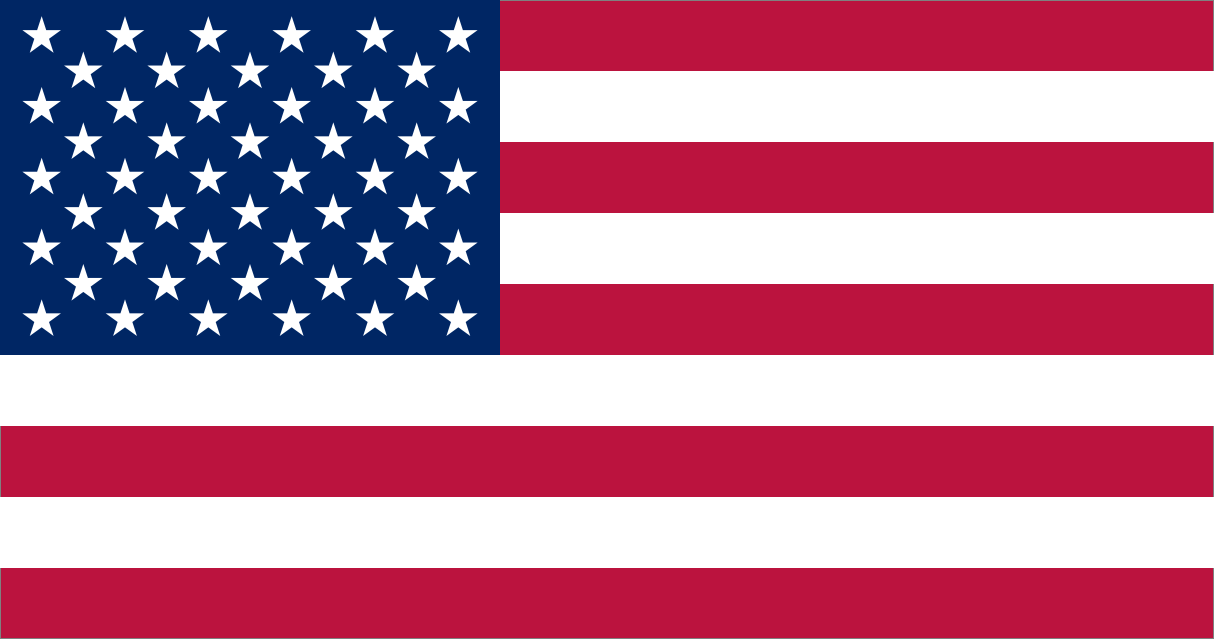
There is a legend that the design of the US flag was borrowed from this English trading company. Benjamin Franklin’s speech is cited as evidence, in which he approves of copying as a show of loyalty to the British crown and a sign that the US government considers the Company an ally in the struggle for its independence.
Facts about the USA
Below is information that will help you get a general idea of the country:
- capital – Washington;
- 50 states plus the District of Columbia and subordinate island territories;
- form of government – federal presidential republic;
- main parties – Republicans and Democrats;
- area – 9.5 million km²;
- population – 333 million people;
- large cities – New York (8.3 million people), Los Angeles (3.98 million people), Chicago (2.69 million people), Houston (2.3 million people), Phoenix (1.68 million people), Philadelphia (1.58 million people), etc.
With a one-quarter share of global GDP, America has become the world’s top economic power and a leader in innovation and scientific research. The popularity of the American way of life has an impact on world culture.
The popularity of the American way of life has an impact on world culture.
USA on the map
Geographically, the country is located on the continent of North America and is washed by the Atlantic Ocean from the east, the Pacific – from the west. The Arctic Ocean washes the state of Alaska from the north.
The United States shares a southern border with Mexico and a northern border with Canada.
Coat of arms of the United States
The Great Seal, which is attached to all government documents, began to be considered the unofficial coat of arms and emblem of the country. It was approved by the Continental Congress in 1776 simultaneously with the declaration of sovereignty from England.
The face of the seal depicts an eagle holding a bunch of arrows and an olive branch in its claws, as a symbol that the country wants peace, but is always ready for war. On the back is an unfinished pyramid of 13 levels, which is crowned with the “Eye of Providence”.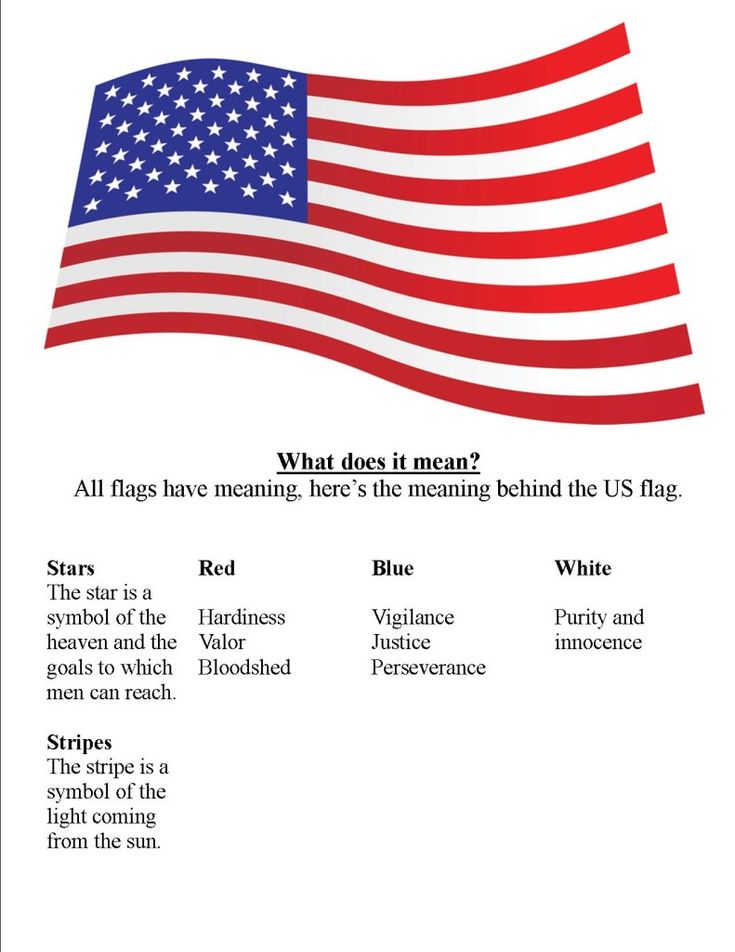 The year of exit from the influence of Great Britain is carved in Roman numerals, the inscription on the ribbon is “The New Order of the Ages”.
The year of exit from the influence of Great Britain is carved in Roman numerals, the inscription on the ribbon is “The New Order of the Ages”.
THIS IS INTERESTING! The Great Seal can be seen at the State Department in Washington DC, where it is on public display.
Flag Day in the USA
Contrary to popular belief, Flag Day in America is celebrated not on July 4 (Independence Day), but a little earlier – on June 14. On the same day that the first design of the flag was approved. The celebration has been celebrated for more than 100 years, since 1885.
The idea came from a simple teacher, Bernard J. Sigrand, who works in one of Fredonia’s schools. It is unlikely that the young man imagined that he would initiate a holiday that his descendants would happily celebrate for several centuries. He just wanted to instill in his students a love for the flag and held a solemn ceremony.
However, four years later his colleague from New York, George Balch, did the same in his city. The local authorities liked the holiday, and in 1892 the Society of the Sons of the Revolution of New York held a celebration on a larger scale.
The local authorities liked the holiday, and in 1892 the Society of the Sons of the Revolution of New York held a celebration on a larger scale.
Two years later, the Governor of New York signed a decree that on June 14, all public buildings in the city must be decorated with flags. Since 1949, on June 14, the Flag’s Birthday has been celebrated as a national celebration, festivities are held throughout the country.
Locals love this holiday even though it is not declared a public holiday anywhere except in Pennsylvania. Americans decorate their homes with flags, take to the streets, organize processions, prepare national dishes, hold solemn ceremonies in schools and universities. For Americans, June 14 is another reason to emphasize their patriotism and confess their love for the main symbol of the United States.
What do the stripes and stars on the US flag mean? | Help | Question-Answer
Elena Slobodyan
Estimated reading time: 2 minutes
78440
Category:
History
Photo: www.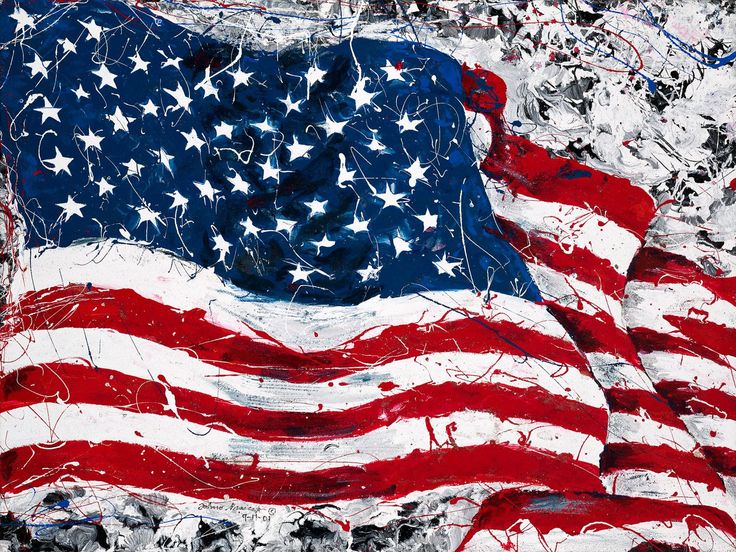 globallookpress.com
globallookpress.com
On July 4, 1776, the American Congress adopted the Declaration of Independence. This document proclaimed the appearance on the political map of the world of a new state – the United States. At the time of the signing of the declaration, the United States did not yet have a national flag. It was then provisionally used by the Continental Flag, also known as the Congress Flag and the Cambridge Flag. On June 14, 1777, to replace it, Congress approved a new banner as national symbols, which consisted of 13 alternating stripes of white and red and 13 white stars on a blue field in the upper left corner.
Continental flag. Photo: Commons.wikimedia.org
AiF.ru tells what the stripes and stars on the American flag mean.
How many stripes are on the US flag and what do they stand for?
The US flag now has seven red (top and bottom) and six white horizontal stripes. They designate 13 former British colonies that formed an independent state in 1776 (Delaware, Pennsylvania, New Jersey, Georgia, Connecticut, Massachusetts, Maryland, South Carolina, New Hampshire, Virginia, New York, North Carolina, Rhode Island ).
How many stars are on the US flag and what do they stand for?
The US flag now has not 13, but exactly 50 stars, which symbolize the current number of states.
See also: Without America. 6 Important Events That Happened On July 4th Other Than Independence Day
US flag US history
Next article
You may also be interested in
Friendship with suffocation. Why Cuba can never trust the US
US propaganda on social media. How to prevent a global collapse
Bloody circus.

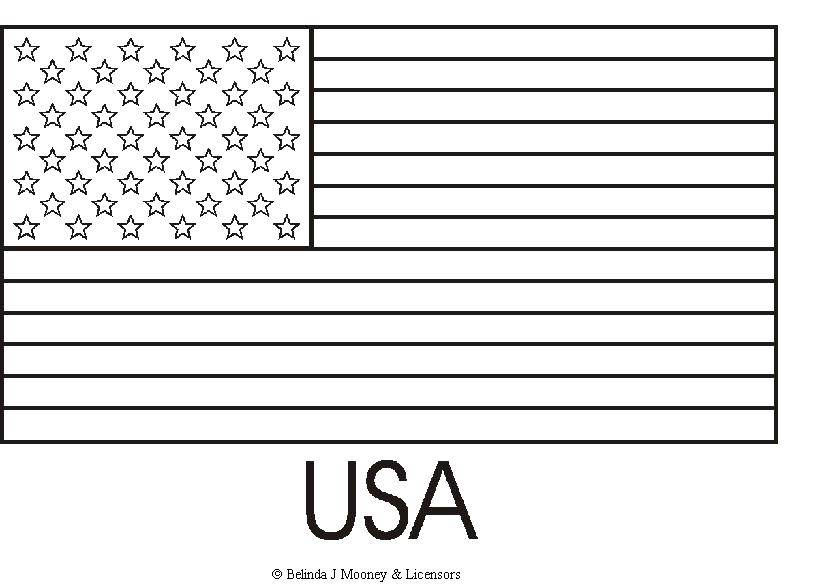 S. Code. Title 4. FLAG AND SEAL, SEAT OF GOVERNMENT, AND THE STATES. Chapter 1. THE FLAG. Sections 1-2.
S. Code. Title 4. FLAG AND SEAL, SEAT OF GOVERNMENT, AND THE STATES. Chapter 1. THE FLAG. Sections 1-2.